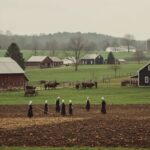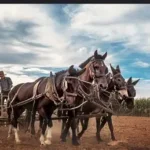How Amish Communities Evolved
The Amish are known today for their plain clothing, horse-drawn buggies, and commitment to a life separate from modern society. But the story behind their way of life is far more dynamic than it may appear. Understanding how Amish communities evolved reveals a journey marked by religious conviction, persecution, migration, and adaptation. Their evolution is not about embracing change—but about protecting core values while navigating a changing world.
Anabaptist Beginnings in 16th-Century Europe
The roots of the Amish trace back to the Anabaptist movement in Switzerland during the Protestant Reformation in the early 1500s. The Anabaptists, considered radical at the time, rejected infant baptism and insisted that only adults who could confess their faith should be baptized.
Key Characteristics:
- Separation of church and state
- Pacifism and nonresistance
- Commitment to simple living and communal support
Because their beliefs threatened both Catholic and Protestant authorities, Anabaptists faced brutal persecution. Thousands were executed or driven from their homes, laying the foundation for a life centered on faith, humility, and separation from worldly power.
The Jacob Ammann Division (1693)
The defining moment in the evolution of Amish identity came in 1693, when Jacob Ammann, a Swiss Anabaptist leader, called for stricter practices and greater discipline. He believed the broader Mennonite movement was becoming too lenient.
Resulting Changes:
- The Amish split from the Mennonites, creating a more conservative and disciplined branch of Anabaptism.
- Ammann emphasized uniform dress, shunning (Meidung), and rigorous church discipline.
- His followers became known as the Amish, forming tightly knit communities focused on humility and obedience.
This split formalized the Amish commitment to maintaining distinct traditions and avoiding outside influences.
Migration to North America (1700s)
Ongoing persecution in Europe and the promise of religious freedom drew many Amish to North America in the early 18th century, particularly to Pennsylvania, which was founded on principles of tolerance.
Migration Milestones:
- The first Amish families arrived in Lancaster County, Pennsylvania, around 1720.
- The region’s fertile land and distance from European authorities made it ideal for farming and practicing their faith freely.
- New settlements grew around farming, faith, and community, reinforcing their traditional values.
This migration was not just physical—it marked a turning point in how Amish communities organized themselves in freedom rather than under threat.
Community Growth and Westward Expansion (1800s)
As land became scarce in Pennsylvania, Amish families began moving westward into Ohio, Indiana, Illinois, and eventually into Canada.
Key Developments:
- New settlements allowed for population growth and regional diversity within Amish traditions.
- The practice of rotating home worship (rather than church buildings) remained central.
- Agricultural self-sufficiency allowed them to remain economically independent and socially separate.
Each new settlement reflected the same core principles, even as local customs and practices varied slightly. This flexibility helped the Amish stay united while adapting to new regions.

Responding to Modernization (Late 1800s–1900s)
As the United States industrialized, Amish communities faced increasing pressure to modernize. However, they responded by drawing clearer lines between themselves and mainstream society.
Key Responses:
- Rejected public high school education and developed their own parochial schools, ending at 8th grade.
- Refused to adopt cars, electricity, and telephones in homes, emphasizing slow, community-centered life.
- Maintained the Ordnung—an unwritten set of rules that guides behavior, dress, and technology use.
Rather than resisting all change, the Amish carefully evaluate each innovation to decide whether it supports or threatens their values. This selective adaptation is a hallmark of how Amish communities evolved over time.
The Yoder Decision (1972)
One of the most significant events in modern Amish history was the U.S. Supreme Court case Wisconsin v. Yoder in 1972. The court ruled that Amish families had the right to remove their children from school after 8th grade for religious reasons.
Why It Mattered:
- Affirmed the Amish right to educate their children in a way that supports their beliefs.
- Strengthened the legal protection of religious freedom in the U.S.
- Helped preserve Amish identity in an increasingly educated and modern society.
This victory reinforced the Amish approach to community life and generational continuity.
Continued Expansion and Community Diversification (2000s–Present)
Today, the Amish are one of the fastest-growing populations in North America, with new settlements emerging in Kentucky, Missouri, New York, Montana, and even Central America.
Modern Trends:
- Amish communities adapt their Ordnung based on regional needs—some permit limited technology for business, while others remain more conservative.
- Farming is still central, but many Amish now run small businesses, work in construction, or produce crafts and furniture.
- Despite increased tourism and media exposure, most communities maintain strict boundaries on photography, internet use, and higher education.
Each new settlement adds to the diversity within the Amish world while staying anchored in shared beliefs.
Final Thoughts
The story of how Amish communities evolved is one of both steadfast tradition and quiet adaptation. From persecution in Europe to peaceful farmland in North America, the Amish have preserved their way of life through a careful balance of faith, discipline, and community support.
Their evolution shows that preserving tradition doesn’t mean resisting all change. It means knowing what matters most—and building a life that protects those values. In a world that often changes too fast, the Amish offer a model of intentional living, grounded in history and shaped by conviction.



